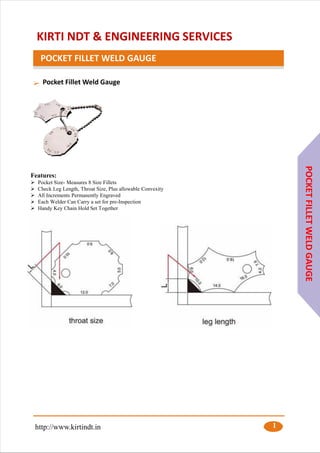Improving Your Welding Abilities: Focus on Gauge Fillet Welds
Improving Your Welding Abilities: Focus on Gauge Fillet Welds
Blog Article
Fillet Weld Layout Methods: Maximizing Joint Efficiency and Looks for Structural Honesty
In the world of structural design and construction, the significance of fillet weld style methods can not be overstated. By thoroughly taking into consideration elements such as weld profile optimization, material selection, joint prep work methods, welding process effectiveness, and visual enhancement engineers, techniques and fabricators can accomplish an unified equilibrium in between capability and look in their bonded frameworks.
Weld Account Optimization


Attaining an ideal weld account involves a meticulous factor to consider of aspects such as product thickness, joint configuration, welding position, and wanted welding rate. In addition, the choice of appropriate welding parameters, such as voltage, present, and take a trip rate, is basic in managing the shape and dimensions of the fillet weld. Using advanced welding methods, such as pulse welding or robot welding, can better improve the weld account to satisfy specific layout demands and high quality requirements.
In essence, weld account optimization is a fundamental element of fillet weld layout that directly affects the total performance and dependability of welded joints in structural applications.
Material Choice Considerations
When considering material selection for fillet weld layout, the compatibility of the base metals is a critical aspect affecting the architectural integrity of the joint. It is necessary to choose products that not just weld with each other effectively however additionally possess similar mechanical homes to make certain the tons is equally distributed between the base and the weld steels. Welding products with vastly different buildings can result in problems such as stress concentrations, early joint failure, or breaking.
Additionally, the setting in which the bonded structure will operate should be thought about when picking materials. Elements like rust resistance, temperature changes, and direct exposure to chemicals can all influence the long life and performance of the weld joint. By choosing materials that appropriate for the intended application and environment, the overall toughness and integrity of the welded joint can be substantially improved.
As a result, detailed factor to consider of product compatibility and ecological variables is paramount in ensuring the weld joint's toughness, sturdiness, and general structural integrity.

Joint Prep Work Techniques
Taking into consideration Read Full Report the crucial duty material option plays in ensuring the structural honesty of fillet weld joints, it is important to carry out precise joint preparation methods that maximize the connection between the base steels. Joint prep work is a crucial step that straight affects the top quality and strength of the weld. One fundamental strategy is the cleansing of base steels to eliminate any kind of contaminants like corrosion, oil, or paint that could endanger the weld's integrity. This can be accomplished with approaches such as grinding, cord brushing, or chemical cleaning.
In addition, tack welding the elements in place prior to the final weld helps keep positioning and minimizes distortion throughout the welding process. By carefully complying with these joint preparation methods, welders can enhance the total performance and aesthetics of fillet weld joints while making certain structural sturdiness.
Welding Process Performance
Reliable welding procedures are vital for attaining optimal productivity and quality in fillet weld construction. Processes like gas steel arc welding (GMAW) and flux-cored arc welding (FCAW) are generally utilized for fillet welds due to Visit Website their flexibility and rate.
Normal calibration of welding equipments, examination of consumables, and maintenance of welding torches can avoid downtime and revamp, inevitably conserving time and resources. Well-trained welders are extra experienced at changing specifications, troubleshooting issues, and maintaining regular weld high quality.
Visual Improvement Approaches
To maximize the top quality of fillet weld fabrication, implementing visual enhancement methods can play a critical duty in guaranteeing accuracy and precision during the welding process. Aesthetic improvement techniques incorporate various methods targeted at improving the look and top quality of fillet welds. One typical strategy is making use of back removing systems to get rid of oxidation on the behind of the weld, causing a cleaner, extra cosmetically pleasing coating. Furthermore, using proper illumination setups in the welding area can boost exposure, allowing welders to check the weld pool and make certain consistent grain development. Visual aids such as weld dimension evaluates and multiplying lenses can aid in evaluating weld accounts and measurements accurately. The use of contrasting noting products or short-lived tacking can help in aligning and positioning the workpieces specifically prior to welding. By incorporating these aesthetic improvement methods into the welding process, welders can accomplish not just structurally sound fillet welds but likewise visually attractive outcomes that satisfy sector criteria.

Final Thought
In conclusion, maximizing fillet weld design includes mindful consideration of weld account, material choice, joint prep work, welding procedure efficiency, and visual improvement approaches. By implementing these methods, architectural stability can be enhanced while additionally attaining aesthetic appeal. It is essential to focus on both efficiency and visual appeals in fillet weld style to make certain the overall quality and sturdiness of the joint.
By thoroughly taking into consideration factors such as weld profile optimization, material selection, joint preparation techniques, welding process efficiency, and visual enhancement techniques, producers and engineers can accomplish an unified equilibrium between functionality Recommended Site and appearance in their welded frameworks.In the realm of fillet weld design, maximizing the weld profile plays an essential function in guaranteeing structural honesty and performance. The weld account, which consists of the dimension and shape of the weld cross-section, directly impacts the distribution of stress and anxiety and load-bearing capability within the joint. It is vital to choose materials that not only bonded together properly yet additionally possess similar mechanical homes to guarantee the load is equally dispersed between the base and the weld metals - Gauge Fillet Weld.In conclusion, maximizing fillet weld style entails mindful factor to consider of weld profile, product choice, joint prep work, welding procedure efficiency, and aesthetic enhancement methods
Report this page